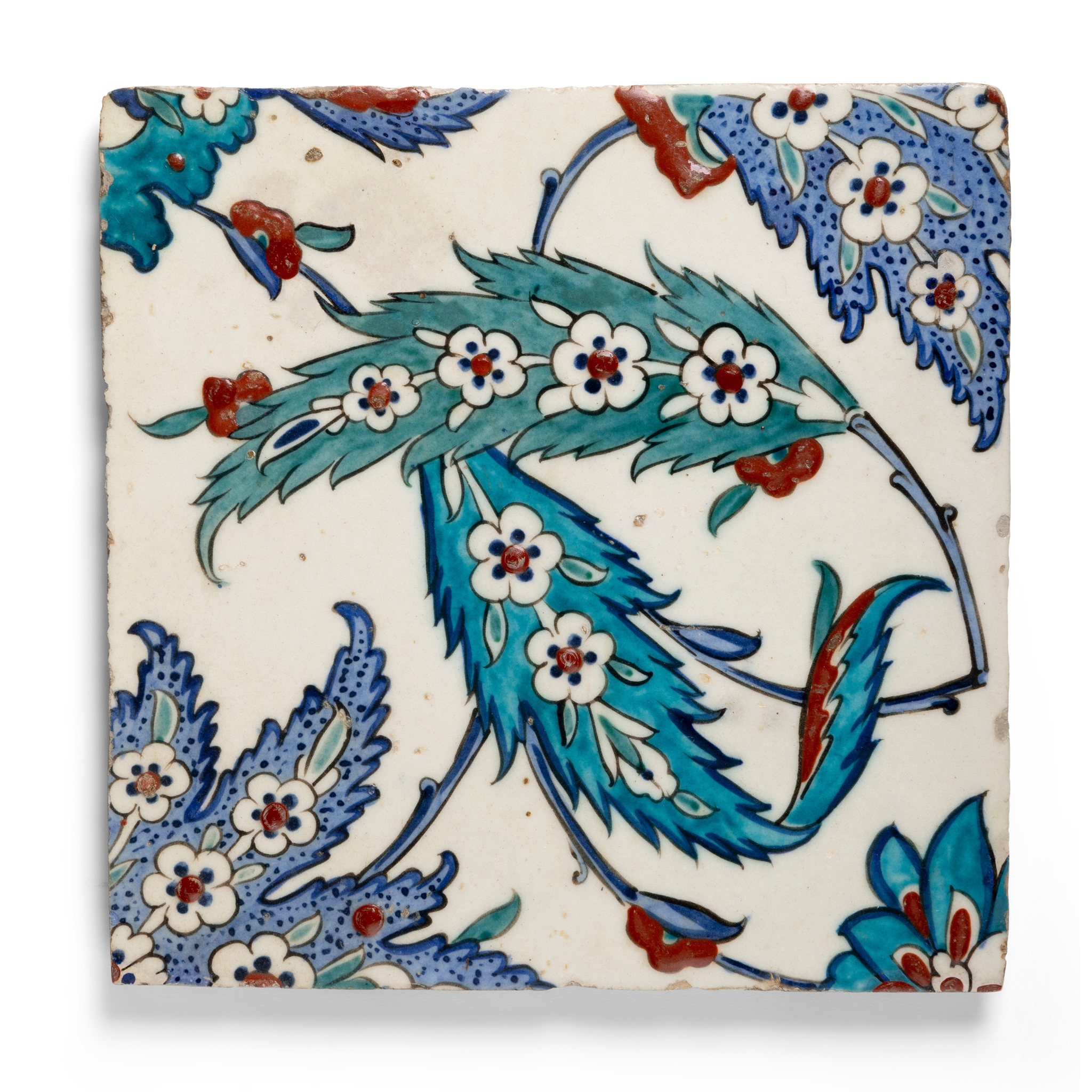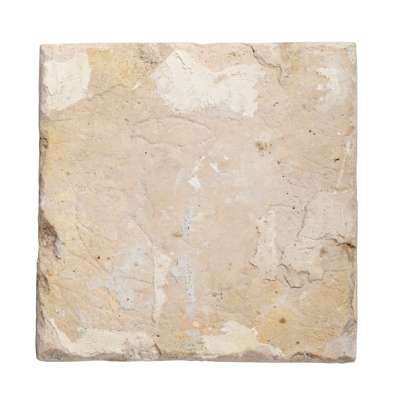
Lot 3

AN IZNIK POTTERY TILE DECORATED WITH 'SAZ' LEAVES
TURKEY, SECOND HALF OF 16TH CENTURY






Auction: 10 December 2025 from 14:00 GMT
Description
of square form, decorated in red, blue, green and black on outline on a white ground under a transparent glaze, with two interwoven saz leaves, corners with part-khatai blossoms filled with prunus flowers, verso with old label in Greek handwriting
Dimensions
17.5cm x 21.5cm
Provenance
Greek private collection since the 1960s.
The label on the reverse states that this tile was displayed in the owner's dining room: Επάνω ἀπό την βιτρίνα [τ]τραπεζαρίαν (‘In the dining room, above the showcase’).
Footnote
This beautiful tile belongs to a group of Iznik ceramics featuring a much-loved and sought after design. The design, juxtaposing spring flowers with dramatically curved saz leaves, creates a perfect sense of movement and vitality while maintaining the harmony of its elements.
The saz leaf is an important motif frequently used by the artists employed in the Ottoman court studio. The first representative of the saz style at the Ottoman palace was Şahkulu, an artist brought from Tabriz by Sultan Selim I (r. 1512-1520). This style was a departure from classical miniature painting, characterised by pictures drawn with a brush in black ink, featuring long pointed fronds known as the ‘saz leaf’. Paintings in the saz style create the impression of a thick forest with intertwined curved leaves and khatai blossoms. In fact, the word saz was used to mean ‘forest’ in the early Turkish Dede Korkut stories dating to the 10th or 11th century.
A closely related Iznik tile with similar decoration is in the Victoria and Albert Museum, London (see inv. no. 696B.1883).





